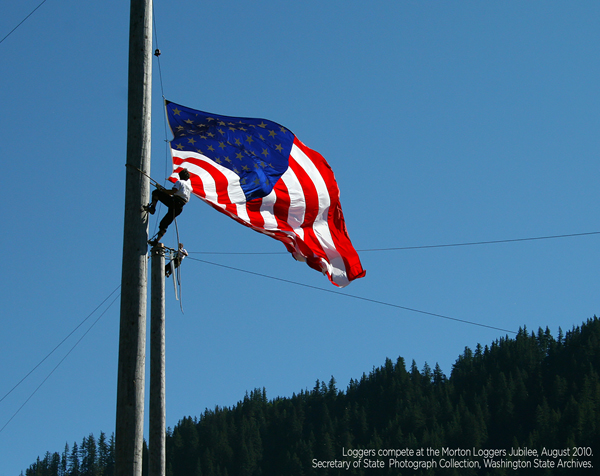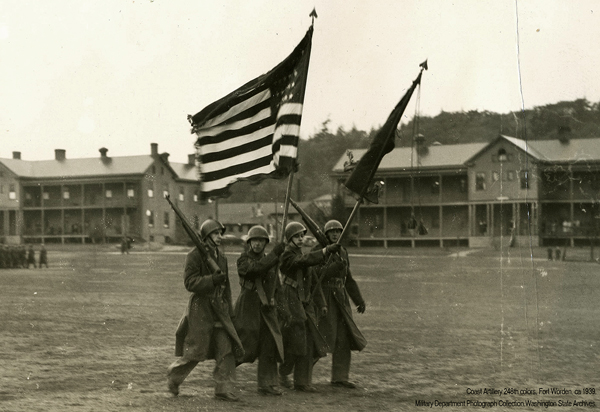What day is it today?
Flag Day!
It doesn’t receive as much attention as Independence Day, but it’s a holiday prompting many Americans and government buildings to display their U.S. flags.
The photo above shows a flag flying high next to a competitor at the Morton Loggers Jubilee a few years ago. The photo below features a group of U.S. soldiers at Fort Worden near Port Townsend in the late 1930s. Both photos are found in our State Archives.
So how did June 14 become Flag Day? The “Stars and Stripes” originated as a result of a resolution offered by the Marine Committee of the Second Continental Congress at Philadelphia and adopted on June 14, 1777. The resolution read:
“Resolved: that the flag of the United States be thirteen stripes, alternate red and white; that the union be thirteen stars, white in a blue field, representing a new constellation.”
Check out this story that discusses the history of Flag Day, including President Wilson signing a proclamation in 1916 that officially established June 14 as Flag Day.
As anyone who studied American history in grade school knows, the 13 stripes represent the original colonies. Of course, the number of stars on the flag has grown since independence; the 50th star, representing Hawaii’s statehood, was added in 1960. A year before that, a star was added when Alaska joined the union as the 49th state. Before that, no star had been added since 1912, when New Mexico and Arizona were admitted to the union. Washington was state No. 42 back in 1889.
The Secretary of State’s Olympia office and website proudly display, interpret and sell state and U.S. flags, and operate a flag donation program. Visit here for more info.

